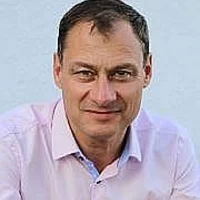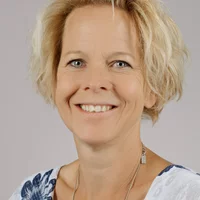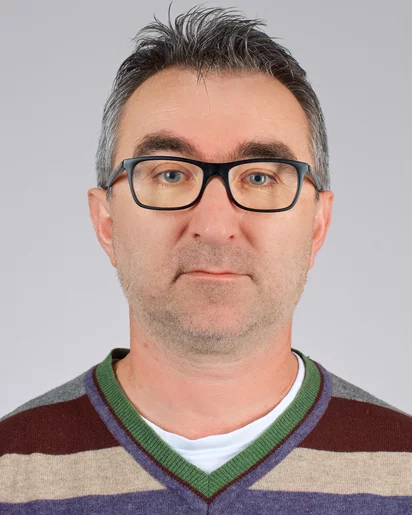Professorships
Adjunct Professor at Technical University of Denmark
Biography
Milan Radovic is a staff scientist at Spectroscopy of Interfaces and Surfaces (SIS) Beam Line, Swiss Light Source. He received Diploma and Magisterium in Applied Physics from the University of Belgrade, Serbia. Milan Radovic started his research career at the Department of atomic physics, Institute of Nuclear sciences "Vinča"- University of Belgrade, with the main task to design and develop the complex experimental facility for surface studies.
In 2005 he moved to Italy where he obtained PhD at Università degli Studi di Napoli Federico II, Naples. At the same time, he was appointed as a Staff researcher in charge of organizing and supervising activities of the MODAlab, SPIN-CNR, (former “Coherentia” Center) Naples, Italy.
In 2009 Milan Radovic was invited to engage a joined position at EPFL- Ecole Polytechnique Fédérale de Lausanne and Paul Scherrer Institute.
From 2013 he is a staff scientist at Paul Scherrer Institute, Switzerland.
Institutional Responsibilities
The project leader for QUEST beamline, SLS 2.0. The QUEST beamline will be the new facility for comprehensive studies of quantum matter. The beamline will deliver photons from 15-2000 eV to a pair of endstations: (1) ULTRA end station, optimized for angle-resolved photoemission spectroscopy (ARPES) in the ultraviolet (VUV) range, with ultrahigh energy and momentum resolution, spin resolution, and temperatures down to 4 K; (2) OPERA end station will be optimized for complimentary ARPES and x-ray photoelectron diffraction (XPD) experiments in the soft x-ray (SXR) range.
Supervising technical staff, master, PhD students, and postdocs.
Leading in situ spectroscopy studies of the electronic properties of ultraclean hybrid materials.
Developing, funding, and managing the complex facility which combines Molecular Beam Epitaxy (MBE) and Pulsed Laser Deposition (PLD) systems with Angle-Resolved Photoemission Spectroscopy (ARPES at the Swiss Light Source (SLS). This facility, heightened with spectroscopic low-temperature Scanning Tunnelling Microscope (STM), creates a uniquely powerful experimental platform for the design, structural and electronic characterization of new functional heterostructures.
Scientific Research
Milan Radovic’s main research activity is focused on the study of the novel electronic and magnetic properties emerging at complex heterostructures, surfaces, and interfaces. He is combining spectroscopy with a material design to develop common methods to tailor and control properties of low dimensional electron systems toward full exploitation of their technological promise. Especially, a static and dynamic interplay between charges, orbital order, magnetism, and lattice distortions at surfaces and interfaces is the main focus of his studies. In addition, he is exploring charge transfer, the relationship between superconductivity and magnetism, and proximity-induced orders to control superconductivity, magnetic fluctuations, and topological properties. Understanding the origin of MIT in 3D and 2D dimensional systems is of high importance for condensed matter physic. Milan Radovic and his colleagues are using synchrotron and FEL-based spectroscopy techniques on complex heterostructures to reveal the cause of MIT and to generate novel preparties that are intimately connected to it.
Selected Publications
For an extensive overview, we kindly refer you to our publication repository DORA.
Correlated electronic structure of colossal thermopower FeSb2: An ARPES and ab initio study, A. Chikina, J.-Z. Ma, W. H. Brito, S. Choi, Q. Du, J. Jandke, H. Liu, N. C. Plumb, M. Shi, C. Petrovic, M. Radovic, and G. Kotliar, , Phys. Rev. Research 2, 023190 (2020).
Iron antimonide (FeSb2) with peculiar colossal thermopower is a mysterious material, and a unified microscopic description of this phenomenon is not achieved yet. Combining angle-resolved photoemission spectroscopy (ARPES) and ab initio calculations, we find that the intricate electronic structure of FeSb2 consists of two bands near the Fermi energy: the weakly dispersing α band and the holelike β band that intersects at Γ and Y points of the Brillouin zone. This study reveals that the sizable renormalization of the nondispersive α band and the hybridization with the holelike β band cause the local increase of the density of states, consequently raising the colossal thermopower in FeSb2.
Thickness and Temperature-Driven Metal-Insulator Transitions in CaVO3: A Resonant Inelastic X-ray Scattering Study, D.E. McNally, Xingye Lu, J. Pelliciari, M. Dantz, M. Naamneh, T. Shang, Z. Wang, G. Sclauzero, S. Beck, C. Ederer, M. Radovic, T. Schmitt, npj Quantum Materials volume 4, Article number: 6 (2019).
Understanding and controlling the electronic structure of thin layers of quantum materials is a crucial first step toward designing heterostructures where new phases and phenomena, including the metal-insulator transition (MIT), emerge. This study establishes a control of the MIT in CaVO3 thin films via tuning electronic bandwidth and local site environment through the selection of the number of atomic layers deposited. The combined X-ray absorption spectroscopy and resonant inelastic X-ray scattering (RIXS) study discloses that the thickness-induced MIT is triggered by electronic bandwidth reduction and local moment formation from V3+ ions, which are both a consequence of the thickness confinement.
Terahertz-Driven Phonon Upconversion in SrTiO3, M. Kozina, M. Fechner, P. Marsik, T. van Driel, J.M. Glownia, C. Bernhard, M. Radovic, D. Zhu, S. Bonetti, U. Staub, and M.C. Hoffmann, Nature Physic, 15, 387-392 (2019).
Direct manipulation of the atomic lattice using intense long-wavelength laser pulses has become a viable approach to creating new states of matter in complex materials. Conventionally, a high-frequency vibrational mode is driven resonantly by a mid-infrared laser pulse, and the lattice structure is modified through indirect coupling of this infrared-active phonon to other lower-frequency lattice modulations. This study shows that it is possible to transfer energy to higher-frequency phonon modes through nonlinear coupling.
Atomic scale lateral confinement of a two-dimensional electron liquid in anatase TiO2, Z. Wang, Z. Zhong, S. McKeown Walker, Z. Ristic, J.-Z. Ma, F. Y. Bruno, S. Riccò, G. Sangiovanni, G. Eres, N. C. Plumb, L. Patthey, M. Shi, J. Mesot, F. Baumberger and M. Radovic, Nano Letters 17 (4), pp 2561–2567 (2017).
Engineering the electronic band structure of two-dimensional electron liquids (2DELs) confined at the surface or interface of transition metal oxides is key to unlocking their full potential. This study showed a new approach to tailoring the electronic structure of an oxide surface 2DEL, demonstrating the lateral modulation of electronic states with atomic-scale precision on an unprecedented length scale comparable to the Fermi wavelength. The (1 × 4) surface reconstruction provides a periodic lateral perturbation of the electron liquid, causing strong backfolding of the electronic bands, the opening of unidirectional gaps, and a saddle point singularity in the density of states near the chemical potential.
Tailoring the nature and strength of electron-phonon interactions in the SrTiO3(001) two-dimensional electron liquid, Z. Wang, S. McKeown Walker, A. Tamai, Z. Ristic, F.Y. Bruno, A. de la Torre, S. Ricco, N.C. Plumb, M. Shi, P. Hlawenka, J. Sanchez-Barriga, A. Varykhalov, T.K. Kim, M. Hoesch, P.D.C. King, W. Meevasana, U. Diebold, J. Mesot, M. Radovic, and F. Baumberger, Nature Material 15, pages 835–839 (2016).
Surfaces and interfaces offer new possibilities for tailoring the many-body interactions that dominate the electrical and thermal properties of transition metal oxides. Here, we use the prototypical two-dimensional electron liquid (2DEL) at the SrTiO3(001) surface to show a remarkably complex evolution of electron–phonon coupling with the tunable carrier density of this system. At low density, where superconductivity is found in the analogous 2DEL at the LaAlO3/SrTiO3 interface our angle-resolved photoemission data show replica bands separated by 100 meV from the main bands. These results reveal the long-range coupling to a single longitudinal optical phonon branch allowing a unified understanding of the transport properties in SrTiO3-based 2DELs.
Momentum-resolved electronic structure of the high-Tc superconductor parent compound BaBiO3,N.C Plumb, D. J. Gawryluk, Y. Wang, Z. Ristić, J. Park, B. Q. Lv, Z. Wang, C. E. Matt, N. Xu, T. Shang, K. Conder, J. Mesot, S. Johnston, M. Shi, and M. Radovic, Phys. Rev. Lett. 117, 037002 (2016).
This study discloses the band structure of BaBiO3, an insulating parent compound of doped high-Tc superconductors, using in situ angle-resolved photoemission spectroscopy on thin films. The data compare favorably overall with density functional theory calculations within the local density approximation, demonstrating that electron correlations are weak. The bands exhibit Brillouin zone folding consistent with known BiO6 breathing distortions. We further demonstrate that the bands closest to the Fermi level are primarily oxygen derived, while the bismuth 6s states mostly contribute to dispersive bands at deeper binding energy. The results support a model of Bi-O charge transfer in which hole pairs are localized on combinations of the O 2p orbitals.
Tuning the metal-insulator transition in NdNiO3 heterostructures via Fermi surface instability and spin fluctuations, R. S. Dhaka, T. Das, N. C. Plumb, Z. Ristic, W. Kong, K. Dolui, E. Razzoli, C. E. Matt, N. Xu, M. Medarde, L. Patthey, M. Shi, M. Radovic, and Joel Mesot, Phys. Rev. B 92, 035127 (2015).
Combining in situ pulsed laser deposition (PLD) with angle-resolved photoemission spectroscopy (ARPES) discloses that substrate-induced strain tunes the crystal field splitting in NdNiO3 (NNO) thin films grown on NdGaO3(110) and LaAlO3(100) substrates. Consequently, a strain alters the FS properties, nesting conditions, and spin-fluctuation strength and thereby controls the MIT via the formation of the electronic order parameter.
Books
Low Dimensional Ti-Oxide based Structures, Milan Radovic, LAP Lambert Academic Publishing, ISBN 978-3-8473-4739-2 (2012)


